Variegated platy - Xiphophorus variatus
Scientific name: Xiphophorus variatus
Common name: Variegated platy
Family: Poeciliidae
Usual size in fish tanks: 6 - 7 cm (2.36 - 2.76 inch)
014
Recommended pH range: 7 - 8
Recommended water hardness: 7 - 26°N (125 - 464.29ppm)
0°C 32°F30°C 86°F
Recommended temperature range: 21 - 26 °C (69.8 - 78.8°F)
The way how these fish reproduce: Pseudo-Livebearer
Where the species comes from: Central America
Temperament to its own species: peaceful
Temperament toward other fish species: peaceful
Usual place in the tank: Middle levels
Food and Feeding
The Variegated Platy (Xiphophorus variatus) is an omnivorous fish that will readily accept a wide range of foods. Their diet should include a high-quality flake as a staple, complemented by protein-rich treats such as bloodworms or brine shrimp twice a week. To support their digestive health and vibrant coloration, include vegetable matter like spirulina flakes or blanched vegetables such as spinach, zucchini, and peas. Feeding small portions twice daily ensures they receive balanced nutrition without overfeeding, which helps maintain water quality.
Origin
The Variegated Platy is native to Central America, specifically the waters of southern Mexico. They are found in freshwater rivers, streams, and ponds, where they thrive in slow-moving or still waters rich in vegetation.
Sexing
Sexing Variegated Platies is relatively simple. Males are generally slightly smaller and have a modified anal fin known as a gonopodium, used for reproduction. Females are often rounder and larger, especially when carrying young, and lack the gonopodium. Observing these differences makes it easy to identify the sexes in a mixed group.
Breeding
Variegated Platies are prolific breeders and are classified as pseudo-livebearers. The male uses his gonopodium to transfer sperm to the female, who can store it for up to six months. This ability to store sperm allows females to give birth multiple times, even without a male present. After a gestation period of 4-7 weeks, the female gives birth to live fry. To protect the young, provide plenty of plants and hiding spots, or consider using a breeding box to ensure fry survival. The fry are fully capable of consuming crushed flake food or newly hatched brine shrimp immediately after birth.
Lifespan
With proper care, Xiphophorus variatus can live for 3-5 years in a well-maintained aquarium. Their lifespan depends on stable water conditions, a balanced diet, and a peaceful environment. Performing regular weekly water changes of around 20-25% will help maintain a healthy environment and prevent stress-related illnesses.
Tank Requirements
The Variegated Platy thrives in freshwater aquariums with a pH between 7-8 and a water hardness of 7-26°N. They do best in slightly alkaline water with moderate filtration and stable water temperatures of 21-26°C (69.8-78.8°F). A tank size of at least 40 liters (~10 gallons) is recommended for a small group, with additional space for more fish. Include plants and decorations to create hiding places, as they offer security and reduce stress. As active swimmers, they appreciate open swimming spaces and moderate lighting. A fine gravel or sandy substrate is ideal, as it mimics their natural habitat and allows them to forage naturally.
Suitable Tankmates
Variegated Platies are peaceful and can coexist well with other calm, similarly sized fish. Ideal tankmates include:
- Black Neon Tetras
- Harlequin Rasboras
- Corydoras Catfish
- Other livebearers like Guppies and Swordtails
- Small, peaceful gouramis such as Honey Gouramis
Avoid pairing them with aggressive or large predatory species, as Variegated Platies may become stressed in their presence.
Recommended Plants
Adding plants to the tank creates a natural environment that supports the Variegated Platy’s need for cover and grazing areas. Suitable plants include:
- Anubias (Anubias barteri)
- Amazon Sword (Echinodorus amazonicus)
- Dwarf Hygro (Hygrophila polysperma)
- Java Moss (Vesicularia dubyana)
- Vallisneria (Vallisneria gigantea)
These plants provide shelter and absorb excess nutrients, promoting a stable water environment. Having dense vegetation helps the fry find hiding spots, which increases their chances of survival in a community tank.
Short Description
The Variegated Platy (Xiphophorus variatus), also known as the Variable Platyfish, is a peaceful and hardy livebearer native to Central America. Known for its adaptability and ease of care, this species is an excellent choice for community aquariums. They thrive in slightly alkaline water with moderate hardness and benefit from a planted tank with ample hiding places. Variegated Platies are active swimmers that add color and interest to any tank, making them a popular choice among novice and experienced aquarists alike.
Pictures
Bought by aqua-fish.net from jjphoto.dk.
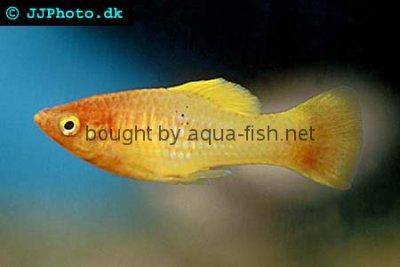



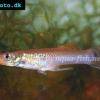 Pike
Pike 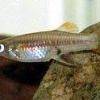 Biskop-tandkarpe
Biskop-tandkarpe 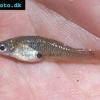 Mosquito
Mosquito 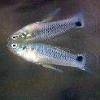 Twospot
Twospot 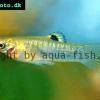 South
South 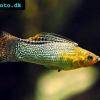 Sailfin
Sailfin 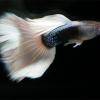 Guppy
Guppy 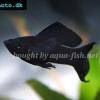 Short
Short 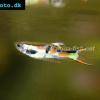 Endler’s
Endler’s 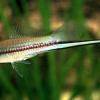 Swordtail
Swordtail 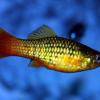 Platy
Platy